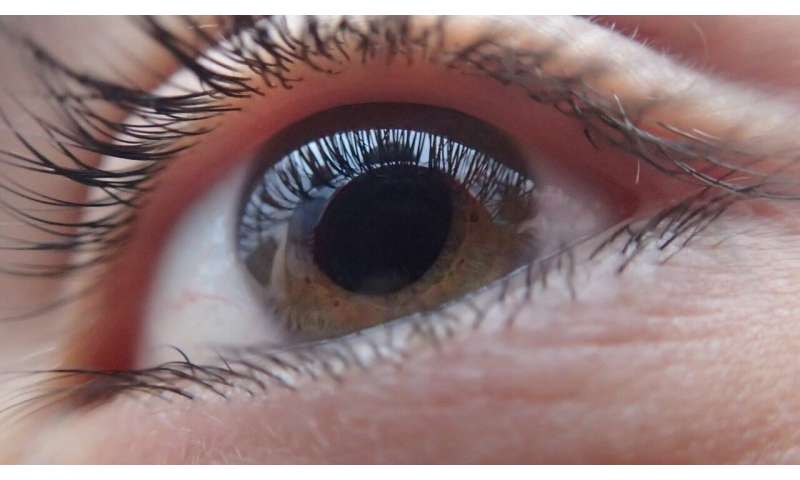
Researchers have identified a new protein linked to age-related macular degeneration (AMD) that could offer new hope for the diagnosis and treatment of the disease, which affects over 1.5 million people in the UK alone.
The research team, made up of scientists from Queen Mary University of London, the University of Manchester, Cardiff University, and Radboud University Medical Center, Nijmegen, found significantly higher levels of a protein called factor H-related protein 4 (FHR-4) in the blood of AMD patients.
Further investigation, using eye tissue donated for medical research, showed the presence of the FHR-4 protein within the macula—the specific region of the eye affected by the disease.
The results of this study open up new routes for early diagnosis, by measuring FHR-4 levels in the blood, and suggests therapies targeting this protein could provide promising future treatment options for the disease.
FHR-4 regulates the complement system, part of the immune system, which plays a critical role in inflammation and the body’s defence against infection.
Previous studies have linked the complement system to AMD showing that genetically inherited faults in key complement proteins are strong risk factors for the condition.
In this study, the researchers used a genetic technique, known as a genome-wide association study, to identify specific changes in the genome related to the increased levels of FHR-4 found in AMD patients.
They found higher blood FHR-4 levels were associated with changes to genes that code for proteins belonging to the factor H family, which clustered together within a specific region of the genome. The identified genetic changes also overlapped with genetic variants first found to increase the risk of AMD over 20 years ago.
Together, the findings suggest that inherited genetic changes can lead to higher blood FHR-4 levels, which results in uncontrolled activation of the complement system within the eye and drives disease.
Blood levels of FHR-4 were measured in 484 patients and 522 age-matched control samples using two independent, established collections of AMD patient data. These were the Cambridge AMD study, led by Professor Anthony Moore from Moorfields Eye Hospital and UCL Institute of Ophthalmology (now at the University of California San Francisco) and Professor John Yates from Cambridge University, and the European Genetic Database (EUGENDA), led by Professor Anneke den Hollander and Professor Carel Hoyng from Radboud University Medical Center.
There are two main types of AMD – ‘wet’ AMD and ‘dry’ AMD. Whilst some treatment options exist for ‘wet’ AMD, there is currently no available treatment for ‘dry’ AMD.
Dr. Valentina Cipriani, who jointly led the statistical data analysis with Dr. Laura Lorés-Motta from the Radboud University Medical Center and is an expert in ophthalmic statistical genetics at Queen Mary University of London, and member of the International AMD Genomics Consortium (IAMDGC), said: “By unveiling FHR-4 as a novel, key molecular player for AMD, our study was able to dissect further the genetic disease predisposition at the factor H region. This is one of the most established genetic associations in the field of complex genetics. We hope our findings will accelerate interest from the wider research community in the involvement of the complement system in AMD, with the ultimate goal of uncovering the role of the whole ‘complementome’ in the disease.”
Professor Simon Clark, a specialist in the regulation of the complement system in health and disease at the University of Manchester, said: “This study really is a step-change in our understanding of how complement activation drives this major blinding disease. Up until now, the role played by FHR proteins in disease has only ever been inferred. But now we show a direct link and, more excitingly, become a tangible step closer to identifying a group of potential therapeutic targets to treat this debilitating disease.”
Professor Paul Bishop, an ophthalmologist and AMD expert at the University of Manchester, said: “The combined protein and genetic findings provide compelling evidence that FHR-4 is a critical controller of that part of the immune system which affects the eyes. Apart from improving understanding of how AMD is caused, this work also provides a way of predicting risk of the disease by simply measuring blood levels of FHR-4 and also provides a new route to treatment by reducing the blood levels of FHR-4 to restore immune system function in the eyes.”
Source: Read Full Article
